Project details
Skill
Cost
Estimated Time
A kitchen island can transform your cooking area, providing extra workspace and storage. If you don’t want to buy one, building a butcher block on wheels is an affordable way to blend function with industrial style. This block offers a generous work surface and ample storage, including space for hanging pots. In the video above, This Old House contributor Christopher Beidel demonstrates how to make this modern take on a classic kitchen island.
Build a Buter Block Island: Materials and Tools
Before starting your project, gather these materials and tools:
- 1/2-inch iron threaded pipes of various lengths
- 1/2-inch iron threaded pipe fittings (elbows, flanges, and tees)
- 1 x 10 oak boards
- Butcher block countertop
- Casters
- Circular saw
- Clamps
- Combination square
- Drill or driver
- Mineral oil
- Random-orbit sander
- Screws
Cut List
Here are the cuts you’ll need:
- IKEA Numerar butcher-block countertop: two at 42 inches
- 1/2-inch iron threaded pipe for stretcher: one at 36 inches
- 1/2-inch iron threaded pipe for rungs and towel bar: six at 18 inches
- 1/2-inch iron threaded pipe for shelf rungs: two at 12 inches
- 1/2-inch iron threaded pipe for legs: four at six inches
- 1/2-inch iron threaded pipe for legs and shelf rungs: six at 5 inches
- 1/2-inch iron threaded pipe for legs: two at 4½ inches
- 1/2-inch iron threaded pipe for legs and towel bar: six at 2 inches
- 1/2-inch iron threaded pipe elbows for towel bar: two
- 1/2-inch iron threaded pipe flanges for legs: eight
- 1/2-inch iron threaded pipe tees for legs: 14
- 1 x 10 oak board: one at 38 inches
- 1 x 10 oak board: one at 35½ inches
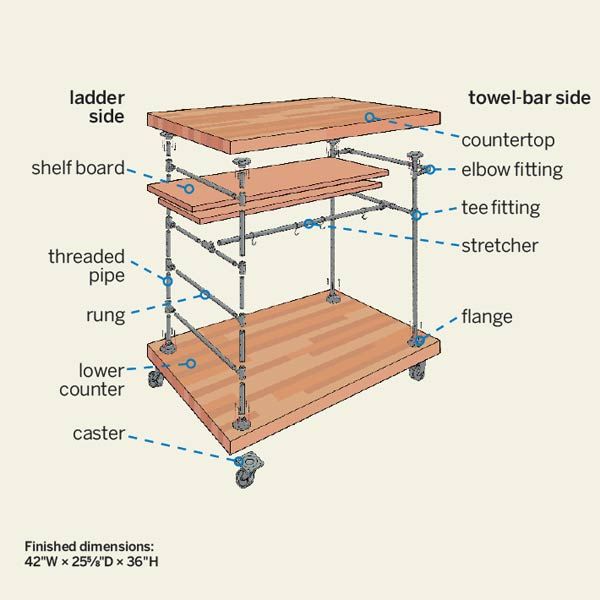
Preparing the Butcher Block
The first step in creating your island is to prepare the butcher block countertop. This involves precise measuring and cutting to achieve a perfect fit. Here’s what to do:
- Place the countertop face down on your work surface. Use a stable and secure workbench to prevent movement.
- Measure and mark the cut lines for the top and bottom pieces. Be as accurate as possible.
- Apply painter’s tape along the cut lines to minimize tear-out. This simple trick can save you from a frayed edge.
- To make the cuts, use a circular saw with a carbide-tipped blade. Make sure the saw blade depth is set correctly.
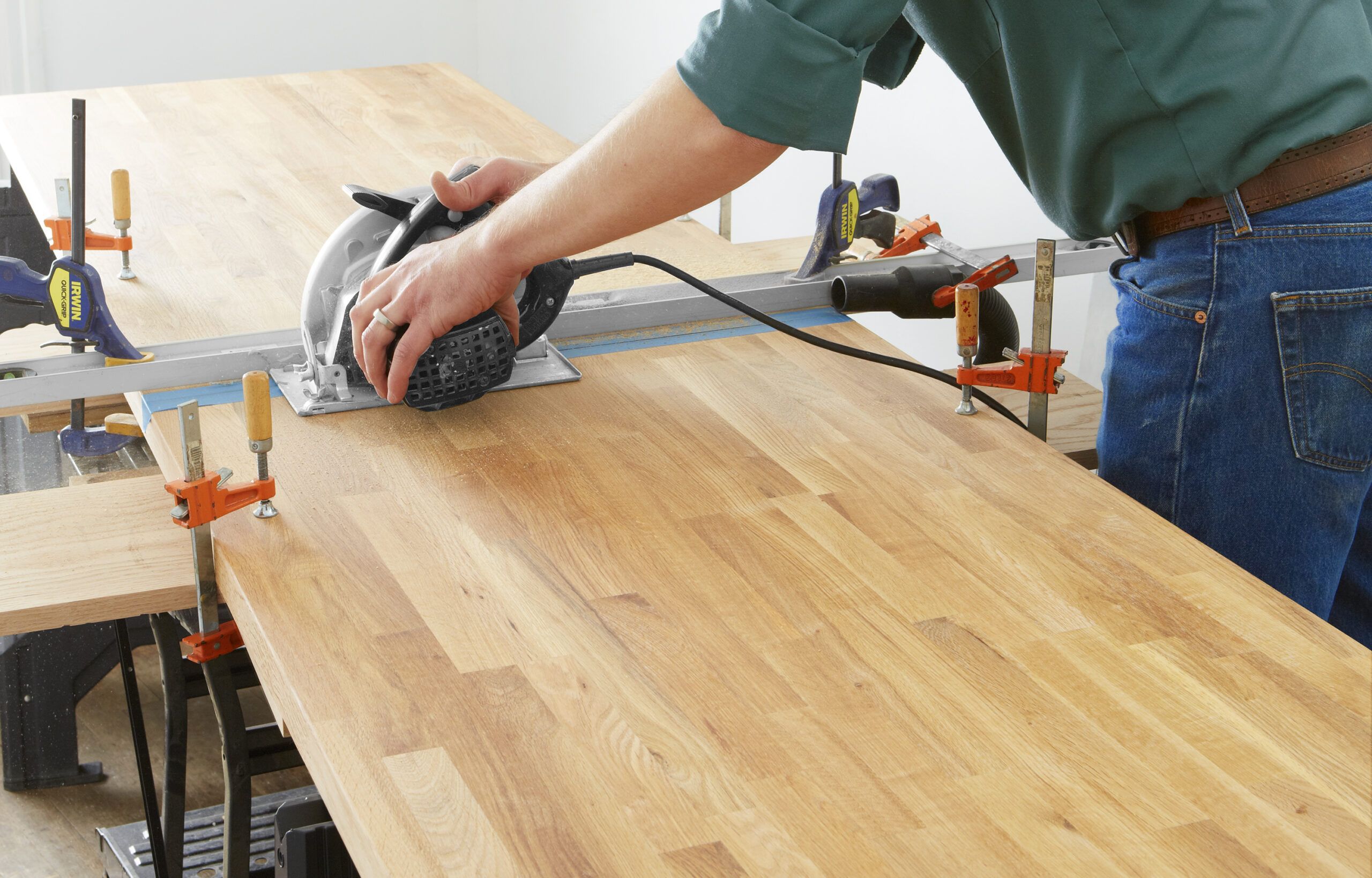
Smooth the Cut Edges
Sand the cut edges with a random-orbit sander, starting with 100-grit and progressing to finer grits for a smooth finish.
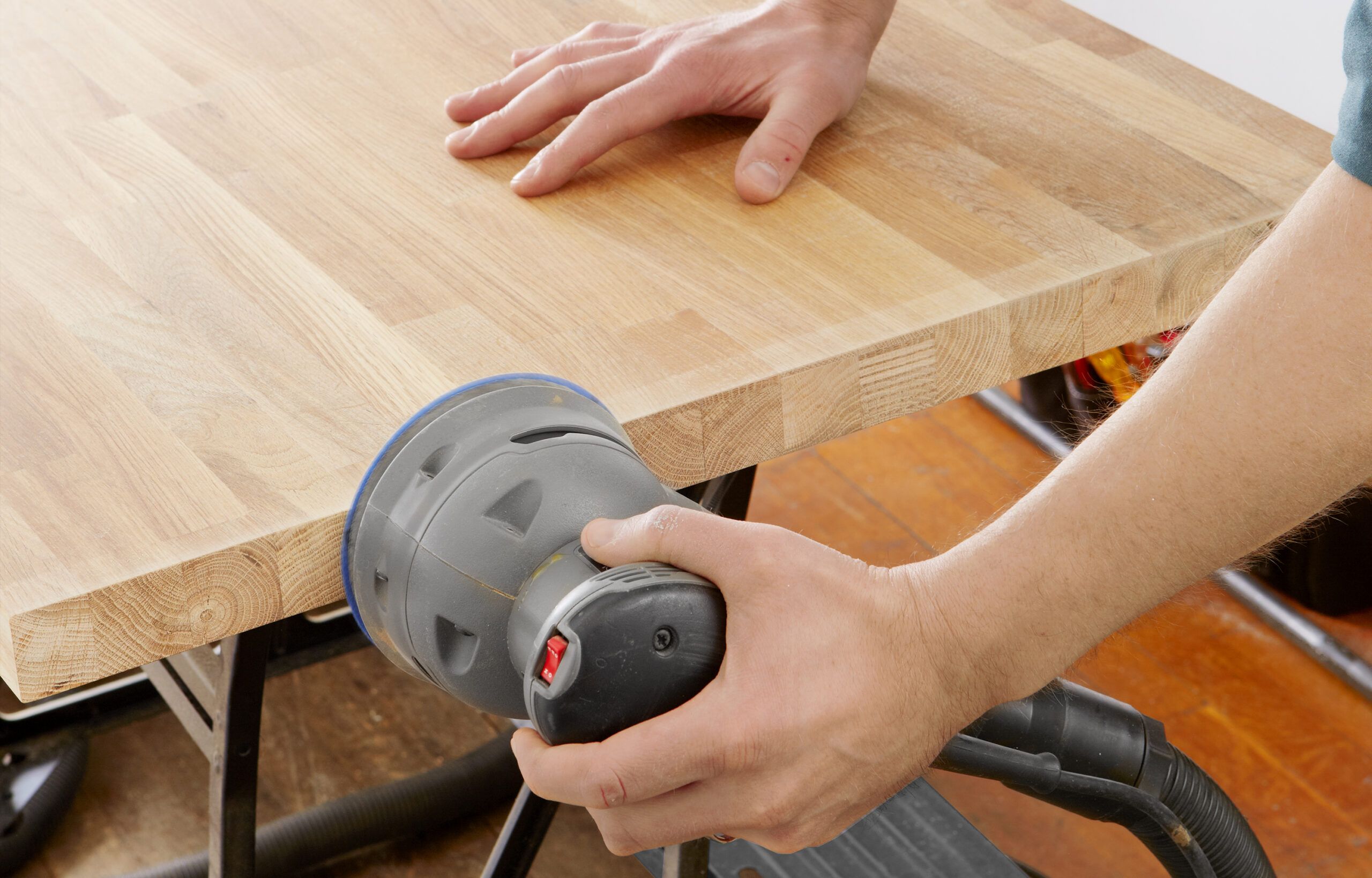
Building the Frame
The frame of the island is constructed using threaded gas pipes, giving it an industrial look. Begin by laying out all the pipe pieces and fittings according to the design.
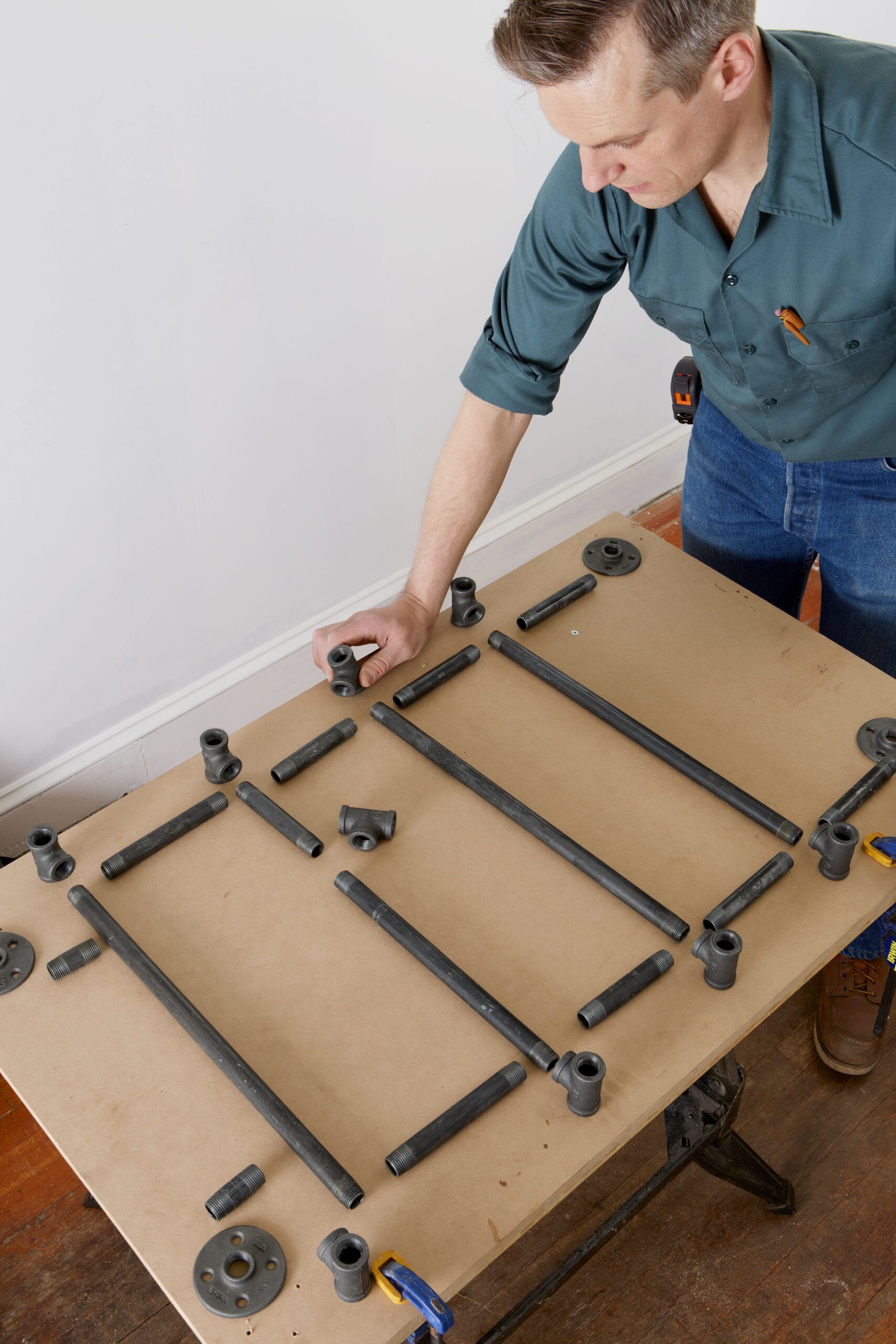
Build the Stretcher Rung
Assemble the stretcher rung, which will establish the width of the island. Make sure all threaded connections are tight.
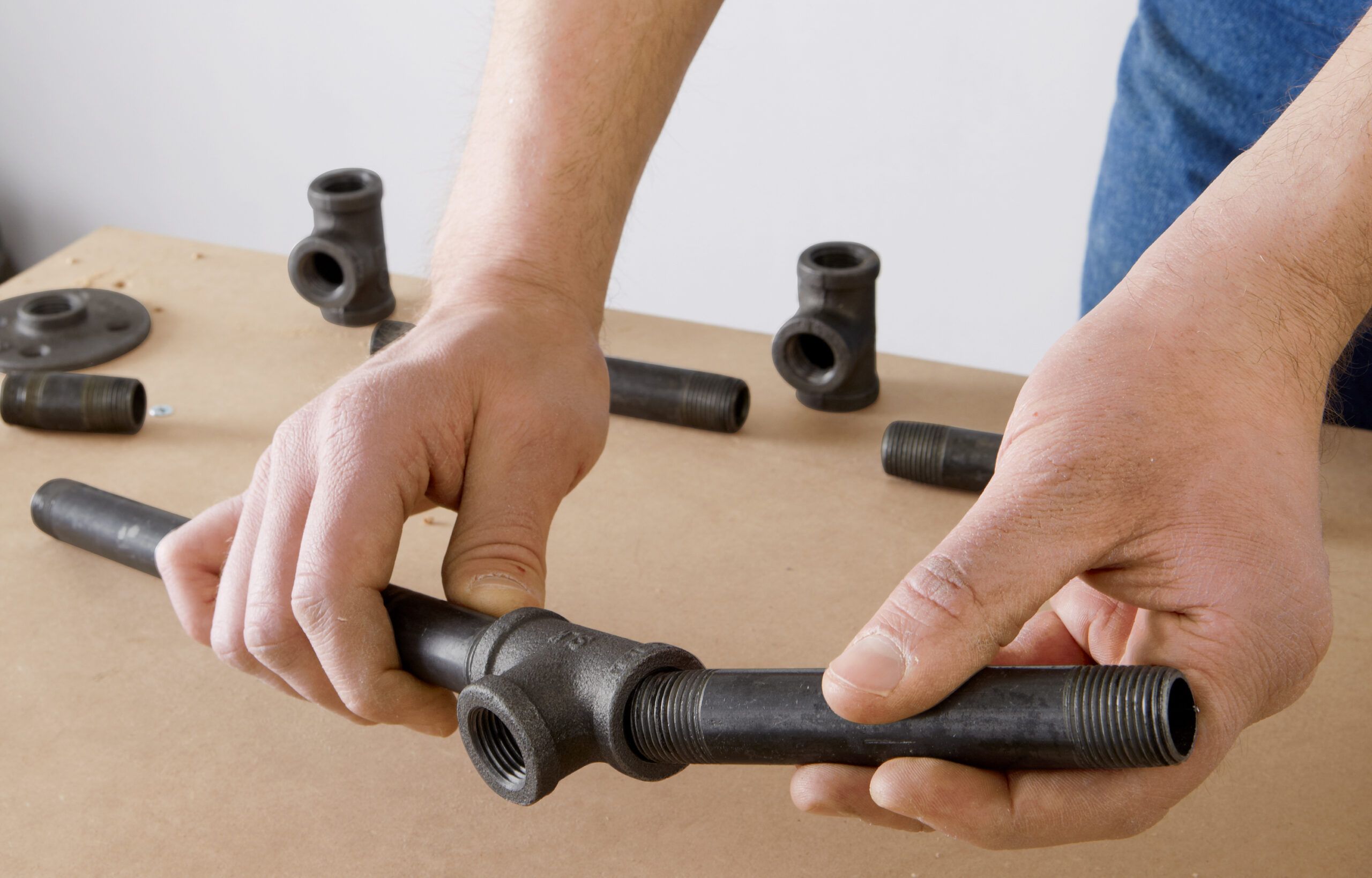
Make the Base Rung
Build the base rung, ensuring it matches the width of the stretcher rung. Spin the T fitting on one end and then the other, a full rotation at a time, until both fittings line up with those of the stretcher rung, as shown in the image below. Repeating this for each stage will give you a straight ladder.
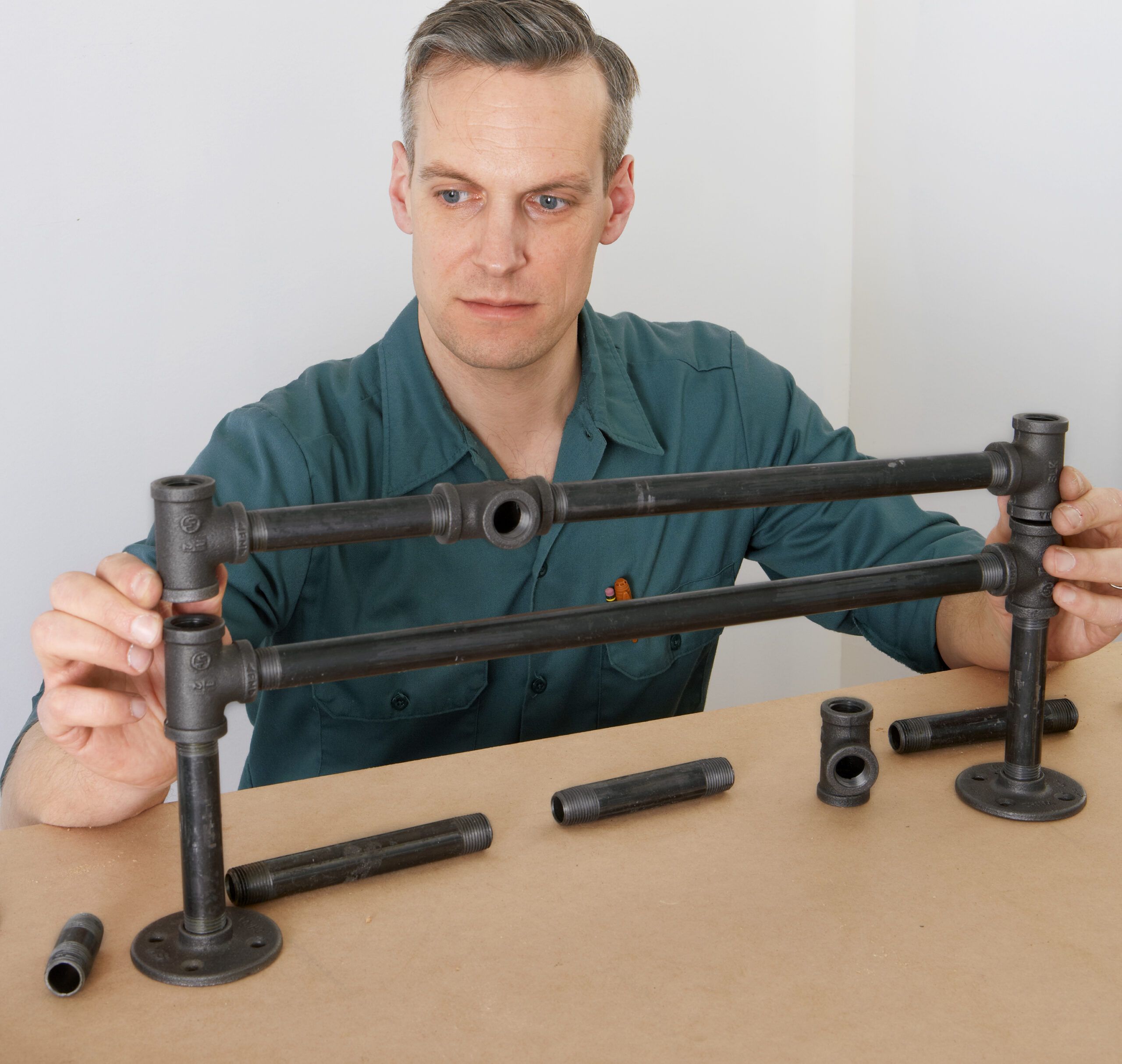
Compare Rungs for Length
Use the base as your reference for each new rung. You will need to tighten and loosen pieces throughout the assembly process to adjust for length. Don’t worry if some pieces seem slightly loose in their fittings—they won’t once the entire island comes together.
Tip: To hold the base rung steady while you work, you can temporarily screw the flanges to your work surface, as shown below.
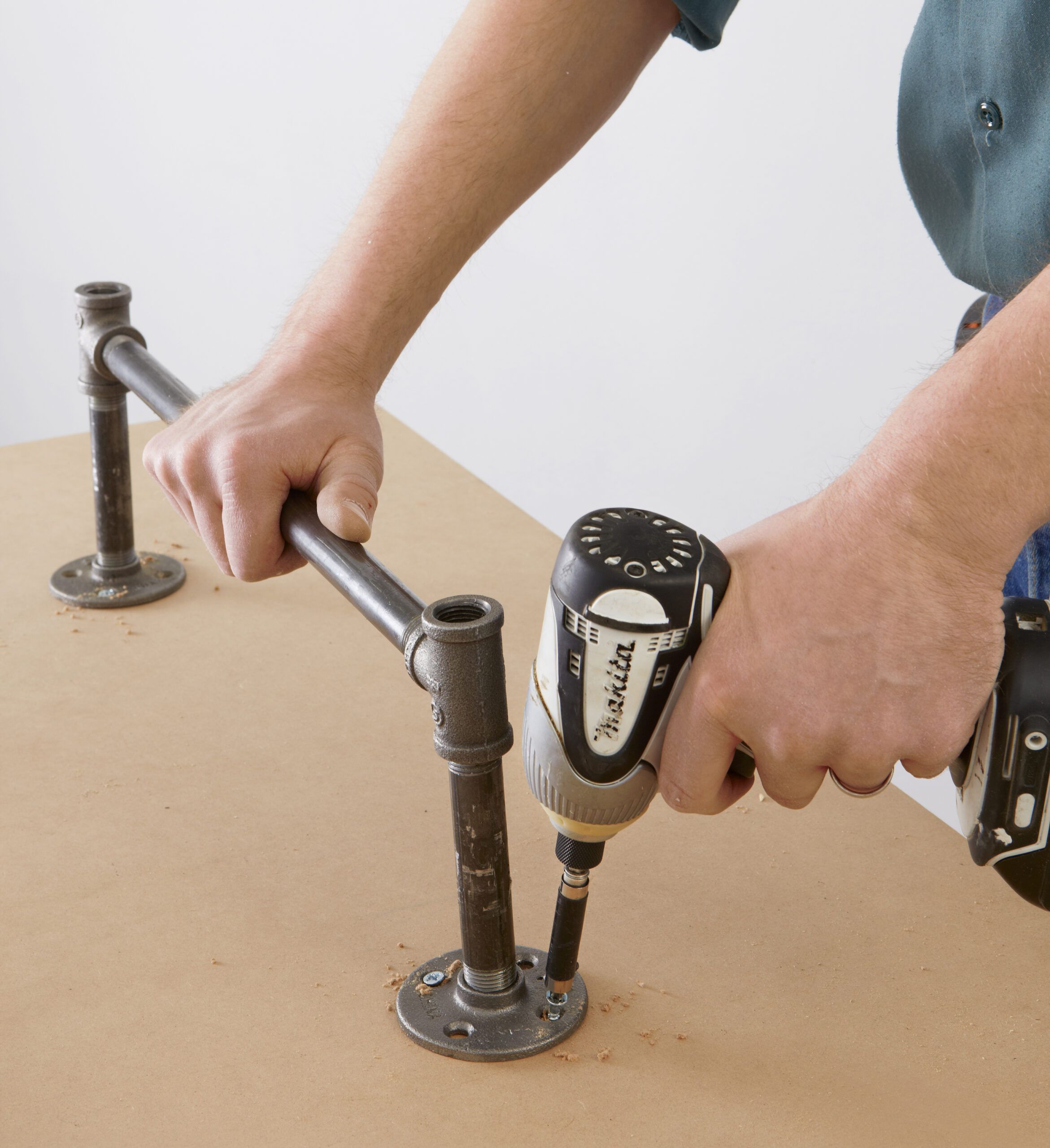
Build the Ladder
Next, you can build the ladder as follows:
- Continue building up the ladder side, adding vertical pipes and additional rungs. This layered approach provides stability.
- Use a belt to hold the rungs in place as you work. This step keeps everything aligned and leads to an easier assembly.
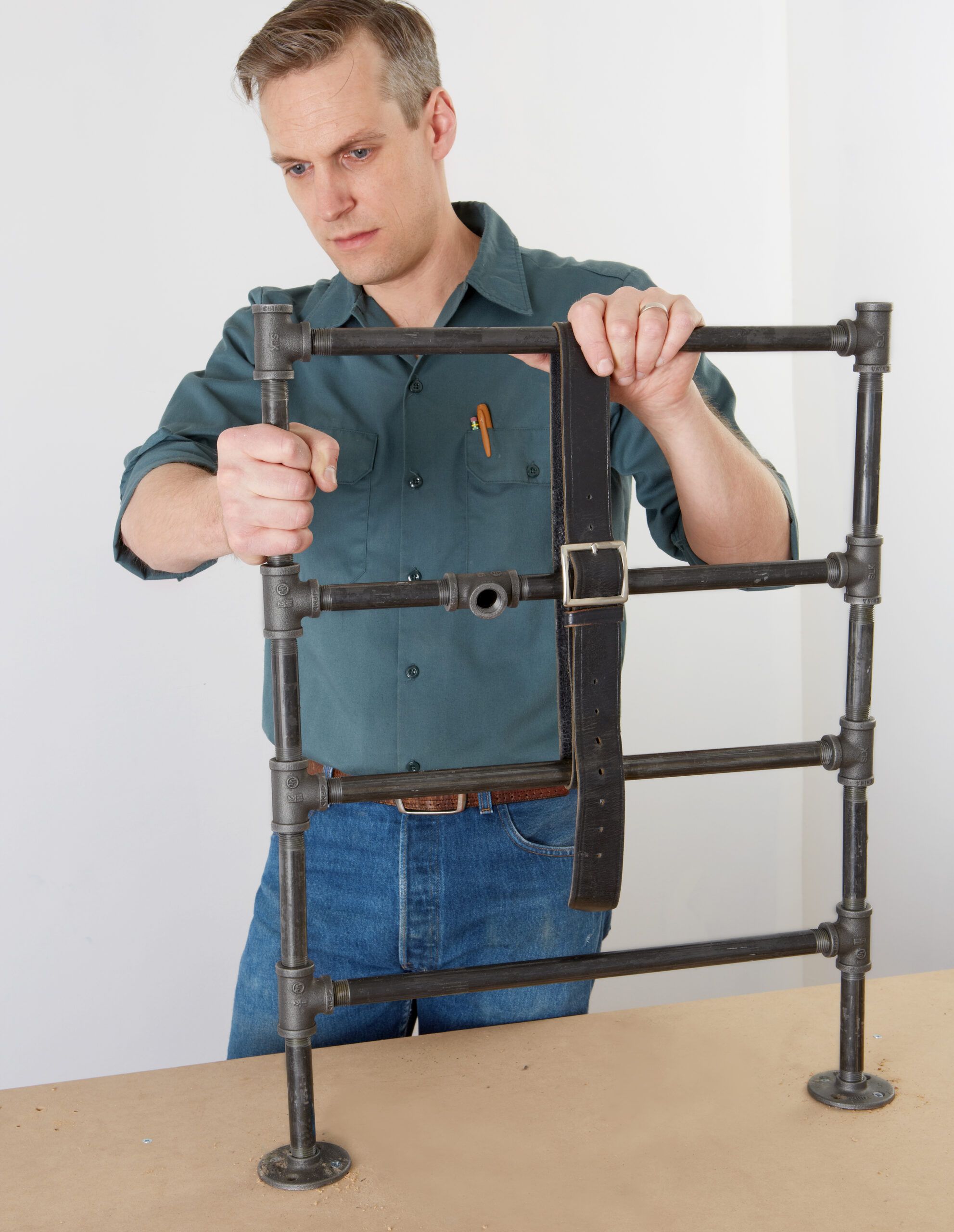
Creating the Towel-Bar Side
Assemble the towel-bar side using the same process as the ladder side with these steps:
- Check that the horizontal tee fittings on both sides align for a level stretcher and shelf. Proper alignment determines balance.
- Compare the heights of both sides and adjust as necessary. Both sides must be perfectly level for a stable top.
This step may require some trial and error, but correct alignment will make the joining phase more manageable.
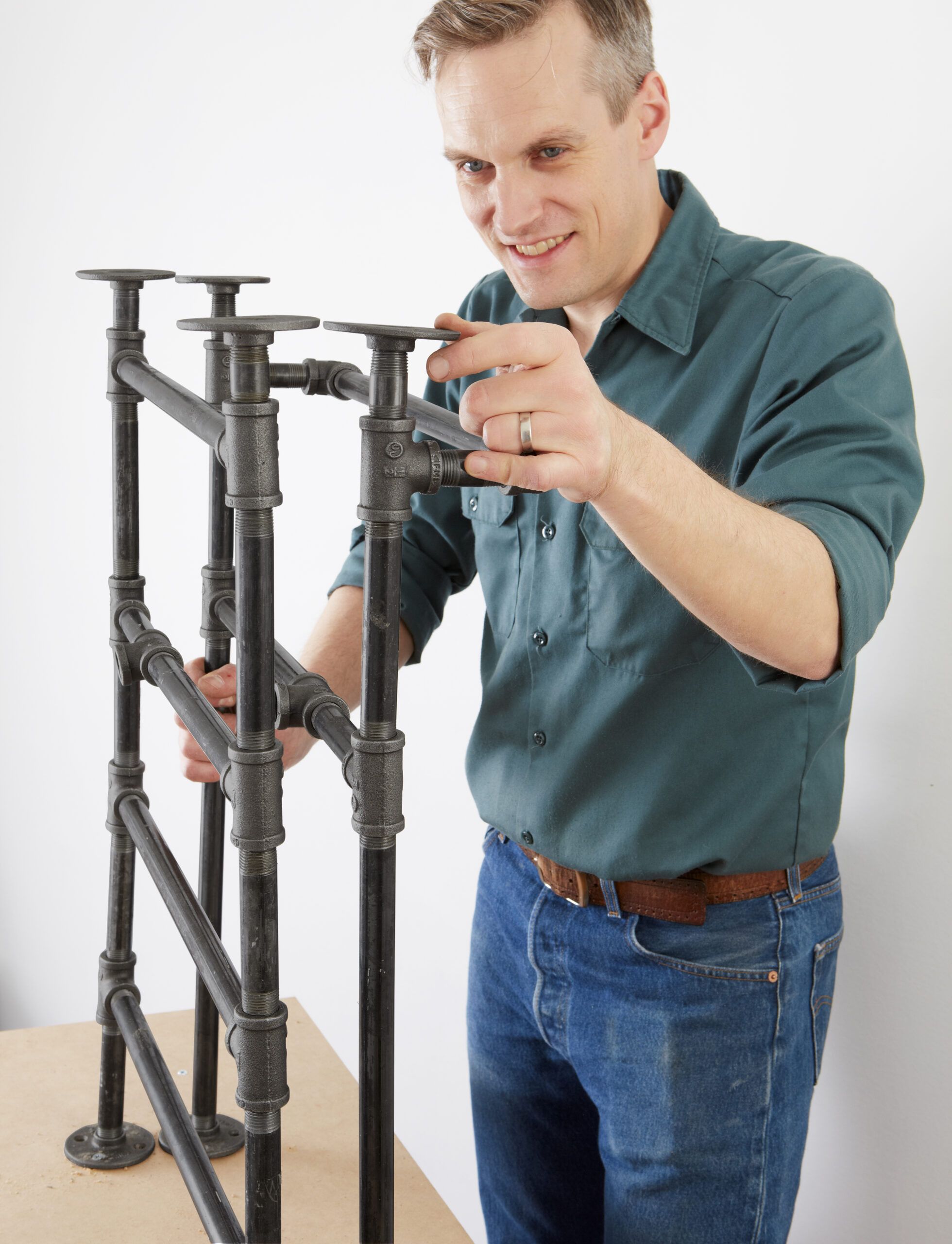
Joining the Sides
To join the sides, thread the stretcher pipe into the tee fitting on the ladder side. Make sure it’s securely fastened.
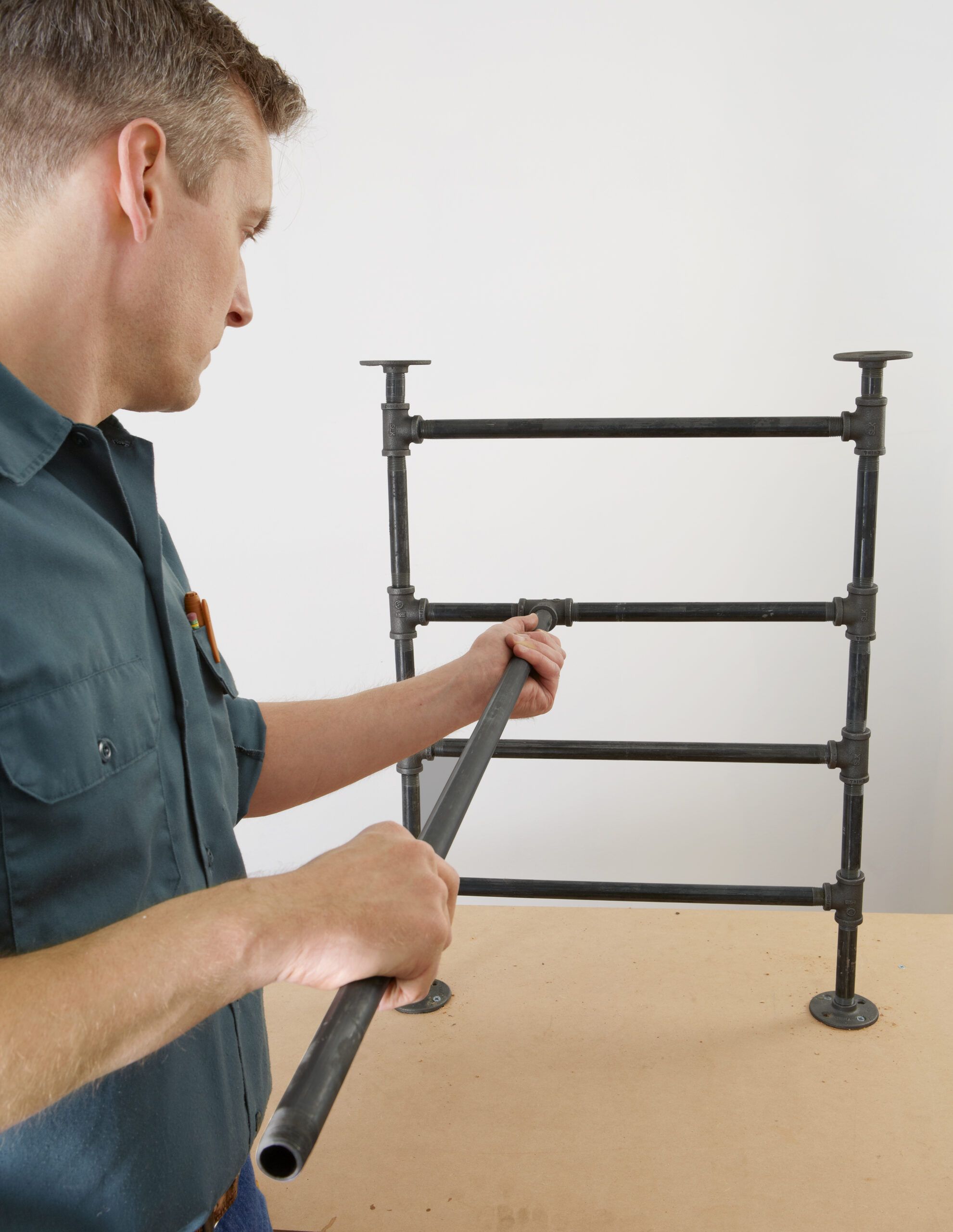
Attach the Towel-Bar Side
Attach the towel-bar side to the other end of the stretcher pipe. Tighten all connections. Rotate the entire towel-bar side to check for proper alignment. Adjust as needed to maintain a level structure.
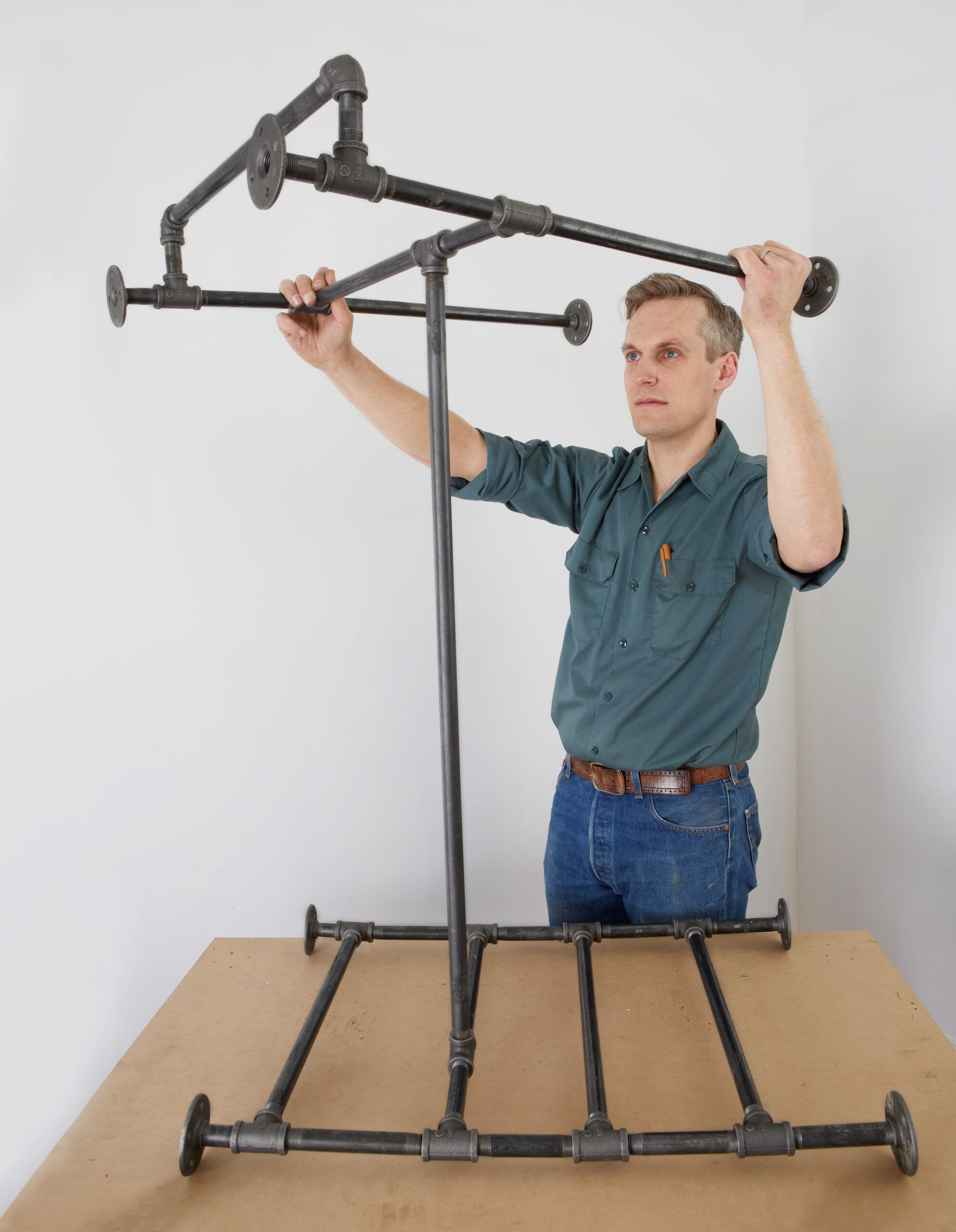
Adding the Shelf and Countertops
The shelf and countertops provide additional workspace and storage.
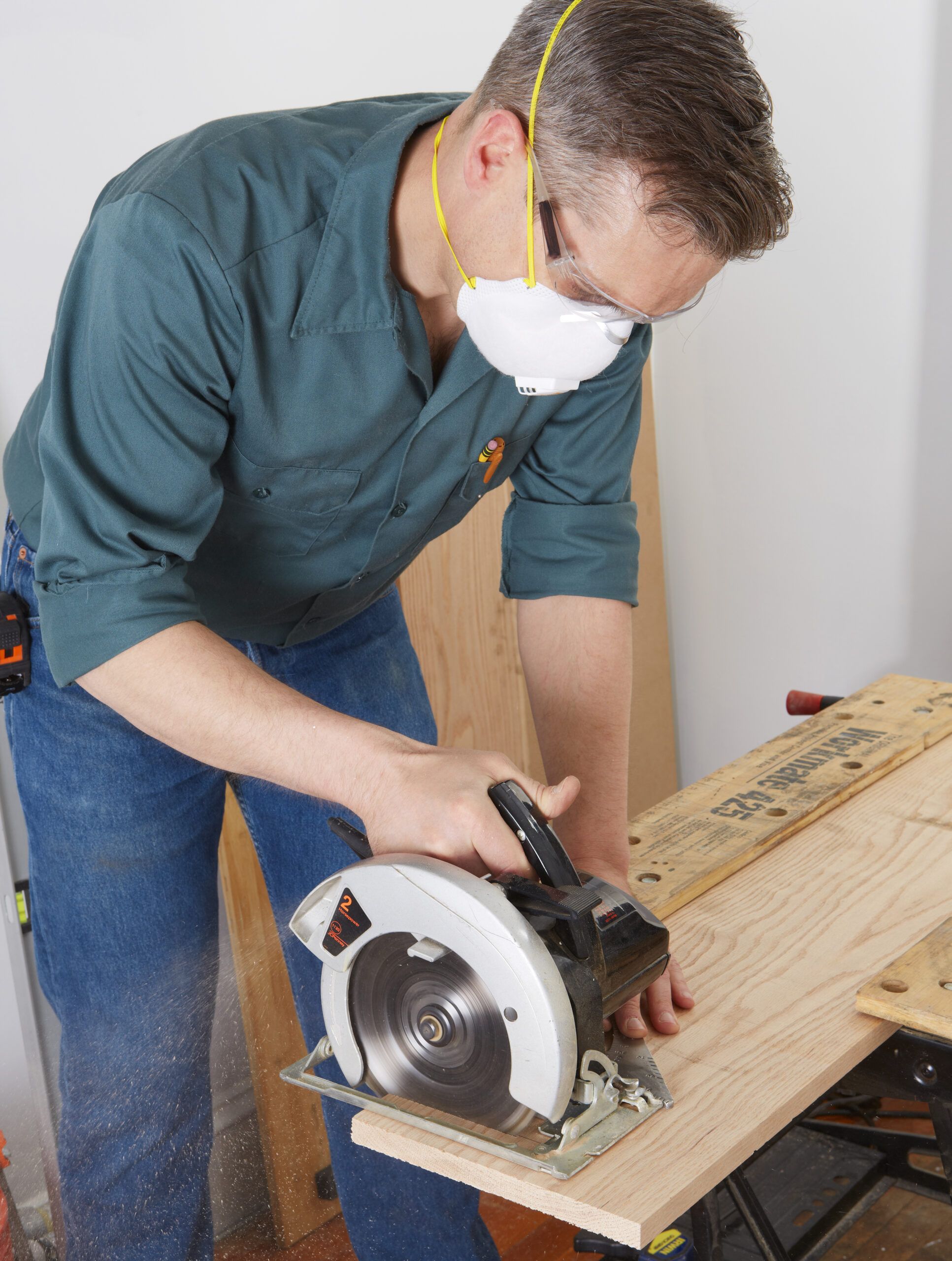
Preparing the Shelf
Prepare the shelf as follows:
- Cut two oak boards to fit between the rungs, with one board shorter to create notches.
- To join the boards, first lay the long shelf board facedown on your work surface.
- Use a section of pipe to get the right spacing for the shorter board.
- Apply glue to the joint between the boards, and clamp the short board in place at your marks.
- Using your drill/driver, countersink pilot holes, and screw the boards together from the underside of the shelf, as shown, to conceal the fasteners.
- Use 1-inch No. 10 flat-head screws every 10 inches around the perimeter.
- Clamp the boards together for a solid bond.
- Sand the shelf smooth and prepare it for installation. A smooth surface enhances the overall quality of the island.

Align the Flanges
Follow these steps to attach the shelves:
- Place the lower butcher block on a temporary surface in your kitchen. Make sure it doesn’t wobble.
- Set the pipe frame on top and align the flanges at the corners. Accurate alignment leads to more stability.
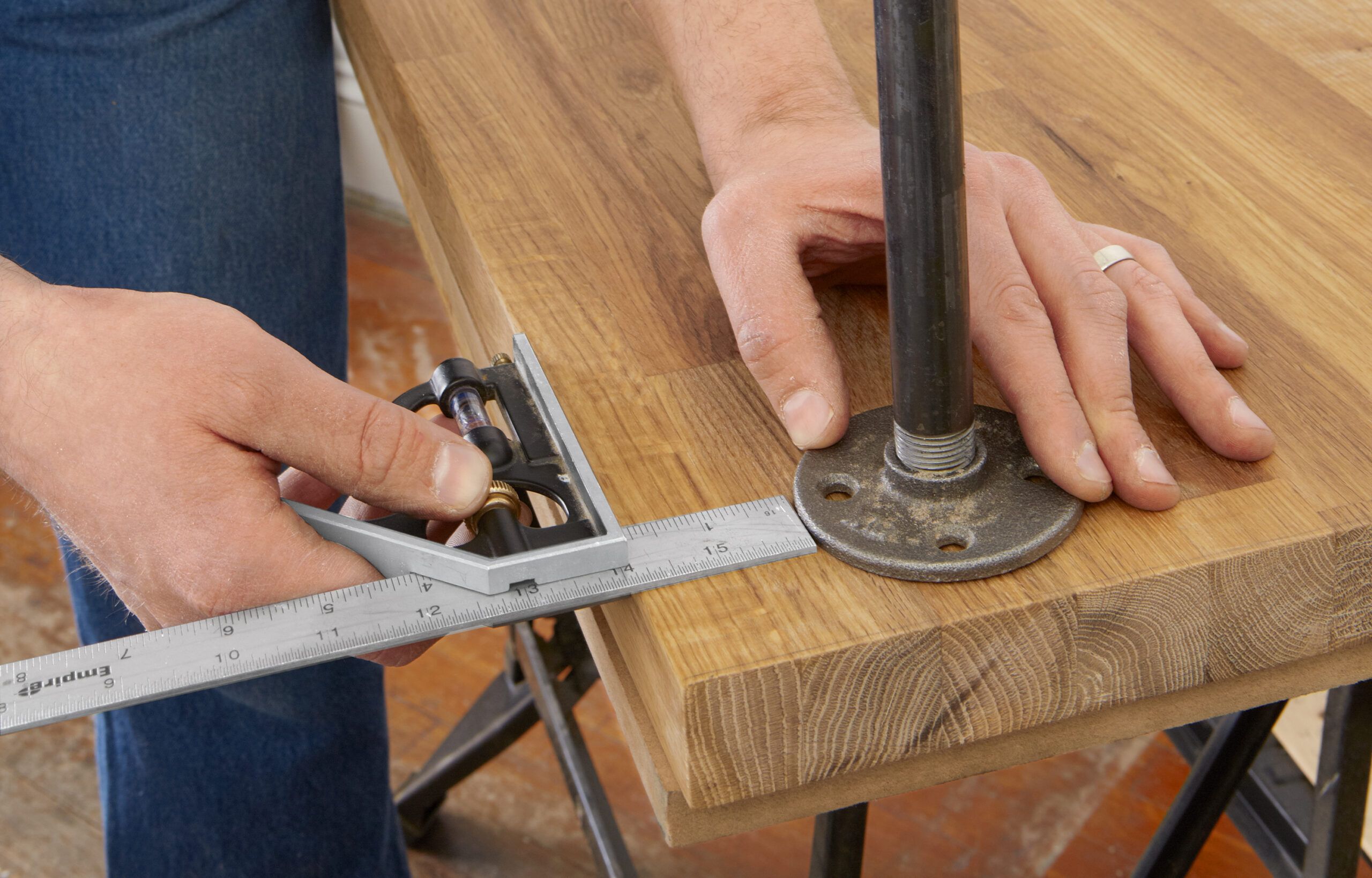
Secure the Lower Counter
Use a 1/8-inch bit to drill pilot holes 1 inch deep in the openings in the flanges on the lower countertop. Pilot holes prevent the wood from splitting.
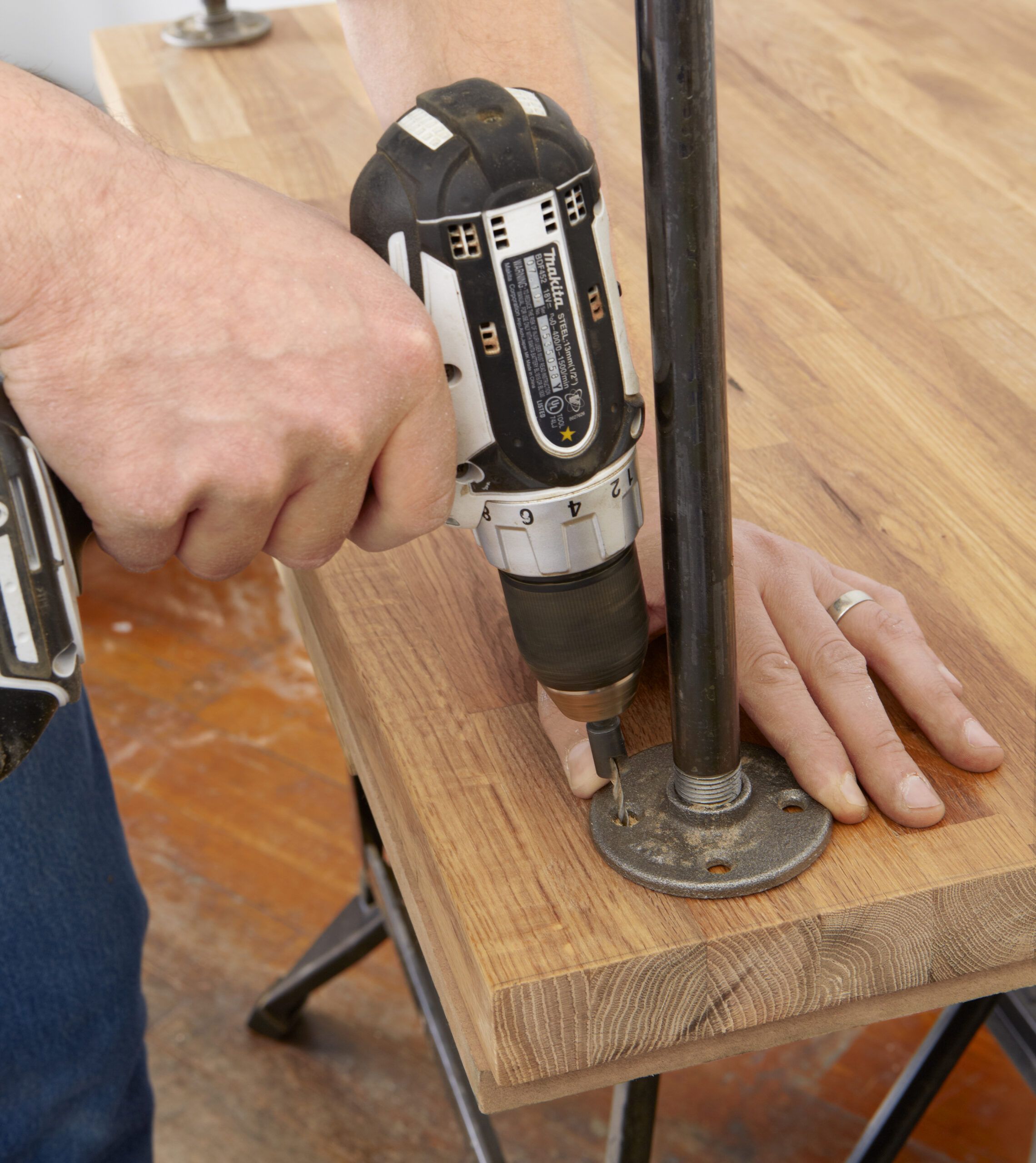
Attach the Countertop
Place the upper countertop on the frame and repeat the process. Make sure all screws are tight and the surface is level. Securing the countertops makes them withstand daily use without shifting or becoming unstable.
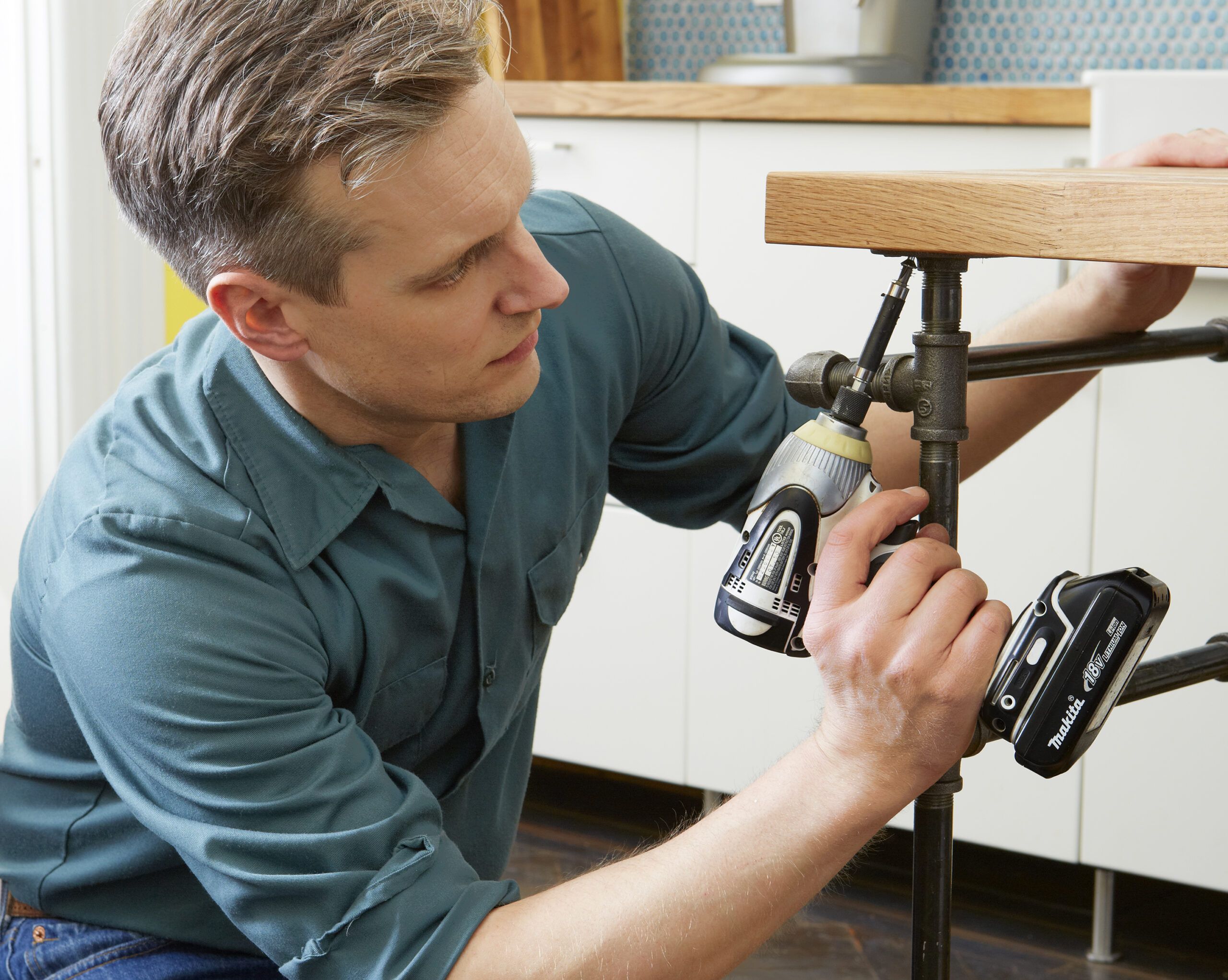
Building a Butcher Block Island: Finishing Touches
Complete your butcher block island with these final steps.
Attach the Casters
Install casters on the bottom of the island for mobility:
- Tilt the assembled island onto one end.
- Mark the position of the holes in a caster.
- Use a ⅛-inch bit to drill pilot holes at your marks.
- Secure the caster with 1-inch No. 10 pan-head screws.
- Repeat the process with the other three casters.
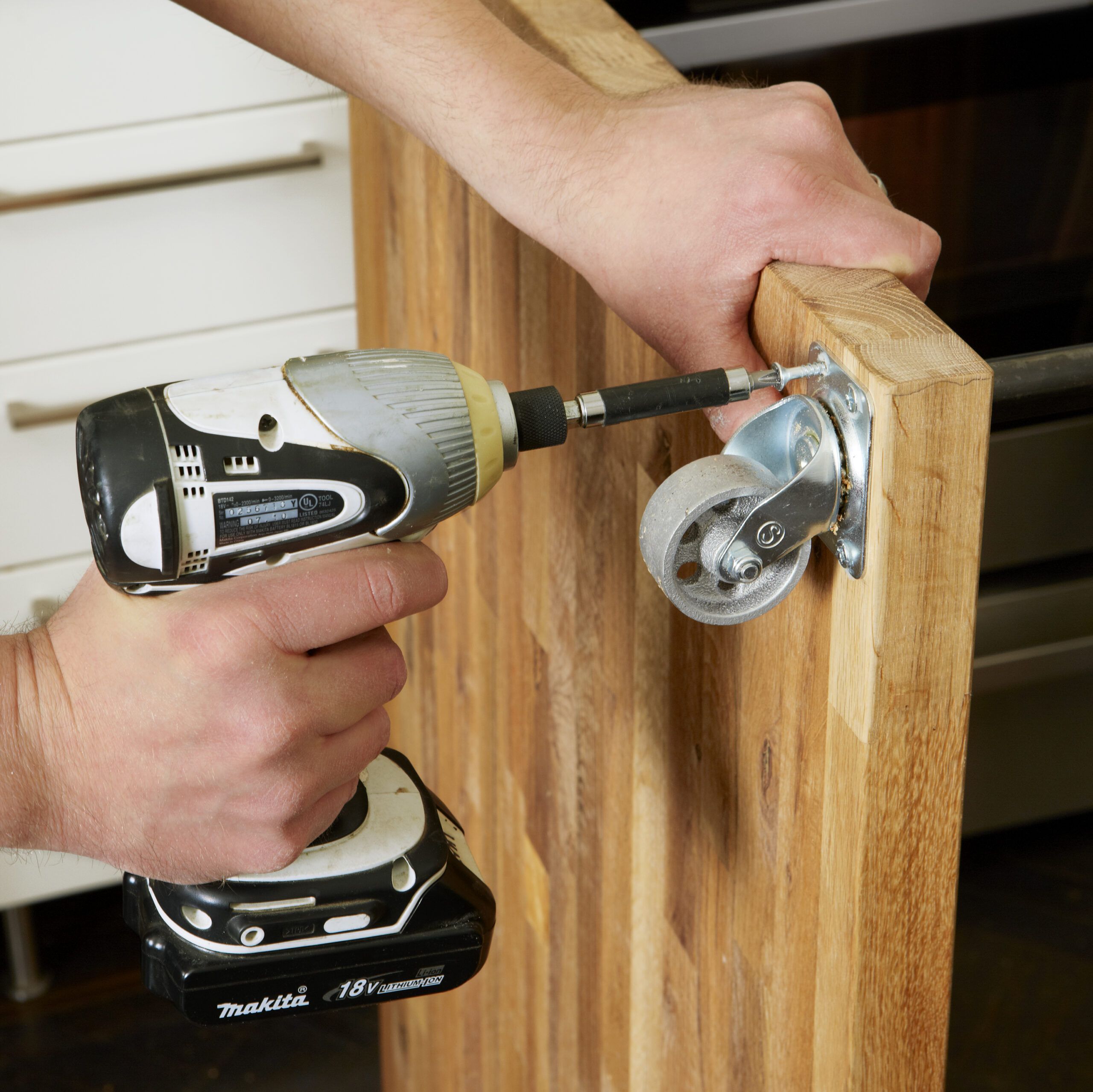
Oil the Wood
Apply mineral oil to the butcher block surfaces and shelf. The oil will protect the wood and bring out its natural beauty. To apply mineral oil, use a clean, dry cloth for an even application. Allow the oil to soak in for an hour, then apply a second coat. Wipe off any excess oil after the second application. Excess oil can attract dust and grime.
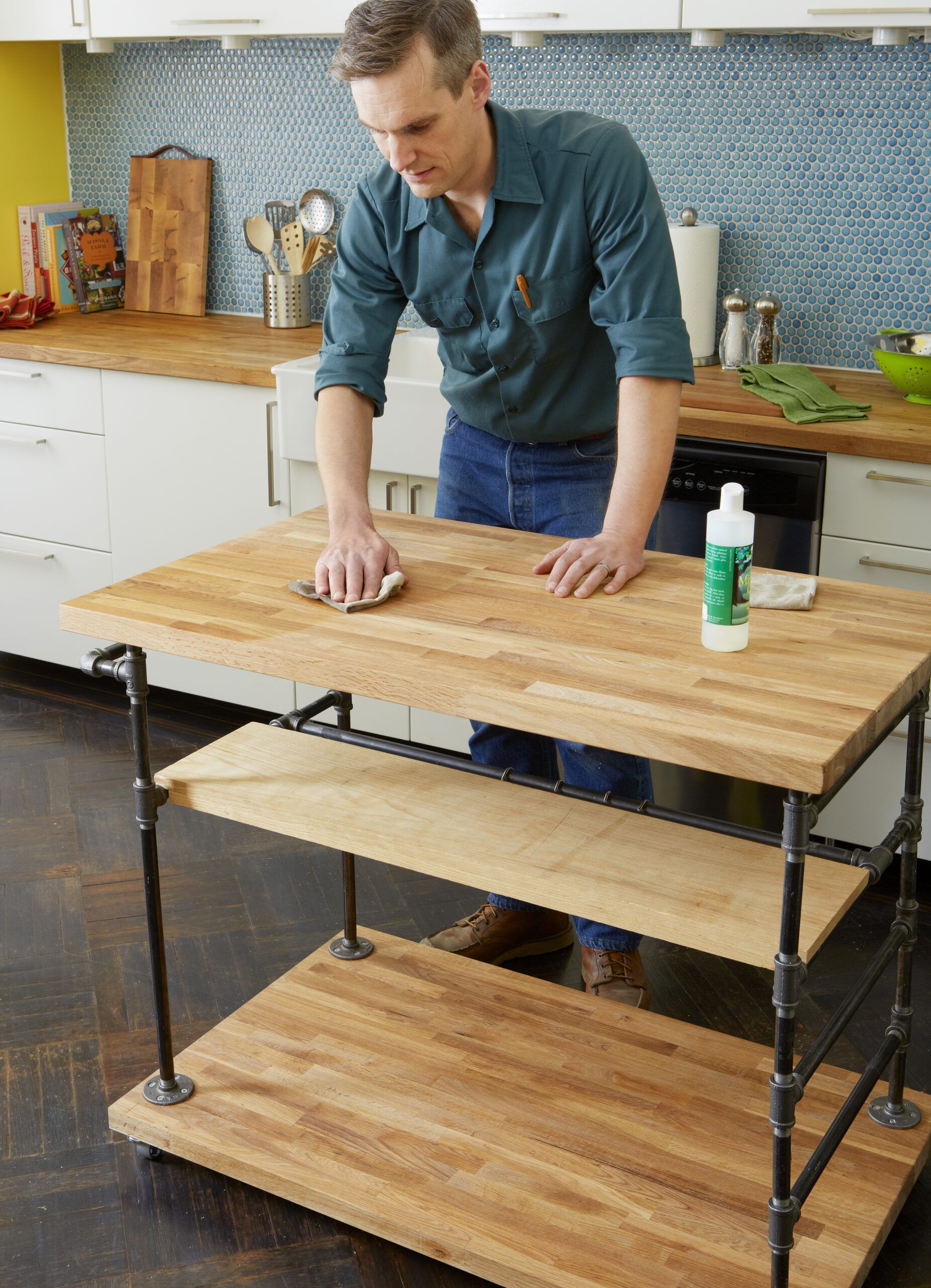
How To Build a Butcher Block Island: Tips for Success
For the best results when building your butcher block island, use these tips:
- Apply beeswax or candle wax to screw threads for easier installation in hardwood.
- Take your time during assembly, as the process requires patience and trial-and-error adjustments.
- Use a combination square to make sure all components are properly aligned.
- Wear gloves when working with the pipes to protect your hands.
